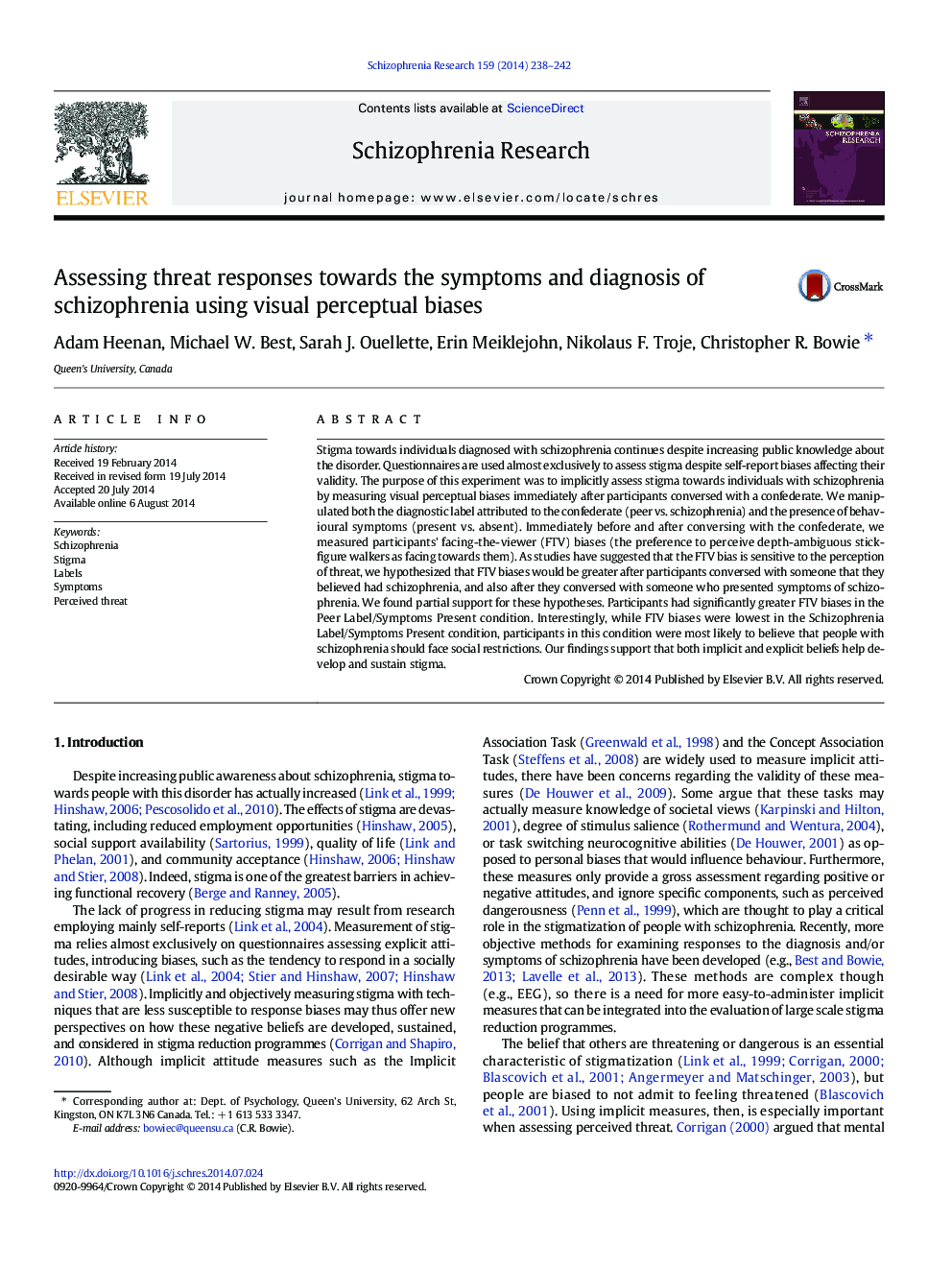| Article ID | Journal | Published Year | Pages | File Type |
|---|---|---|---|---|
| 10307752 | Schizophrenia Research | 2014 | 5 Pages |
Abstract
Stigma towards individuals diagnosed with schizophrenia continues despite increasing public knowledge about the disorder. Questionnaires are used almost exclusively to assess stigma despite self-report biases affecting their validity. The purpose of this experiment was to implicitly assess stigma towards individuals with schizophrenia by measuring visual perceptual biases immediately after participants conversed with a confederate. We manipulated both the diagnostic label attributed to the confederate (peer vs. schizophrenia) and the presence of behavioural symptoms (present vs. absent). Immediately before and after conversing with the confederate, we measured participants' facing-the-viewer (FTV) biases (the preference to perceive depth-ambiguous stick-figure walkers as facing towards them). As studies have suggested that the FTV bias is sensitive to the perception of threat, we hypothesized that FTV biases would be greater after participants conversed with someone that they believed had schizophrenia, and also after they conversed with someone who presented symptoms of schizophrenia. We found partial support for these hypotheses. Participants had significantly greater FTV biases in the Peer Label/Symptoms Present condition. Interestingly, while FTV biases were lowest in the Schizophrenia Label/Symptoms Present condition, participants in this condition were most likely to believe that people with schizophrenia should face social restrictions. Our findings support that both implicit and explicit beliefs help develop and sustain stigma.
Related Topics
Life Sciences
Neuroscience
Behavioral Neuroscience
Authors
Adam Heenan, Michael W. Best, Sarah J. Ouellette, Erin Meiklejohn, Nikolaus F. Troje, Christopher R. Bowie,
